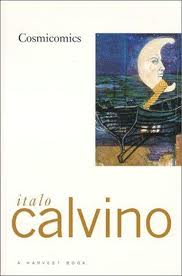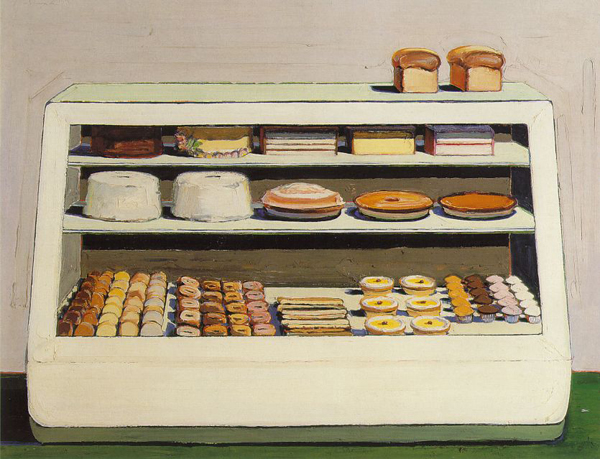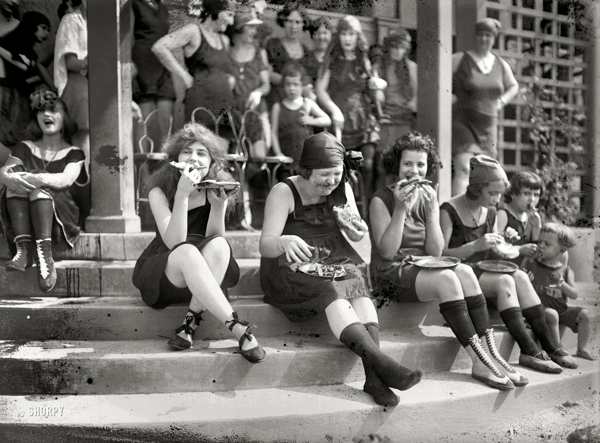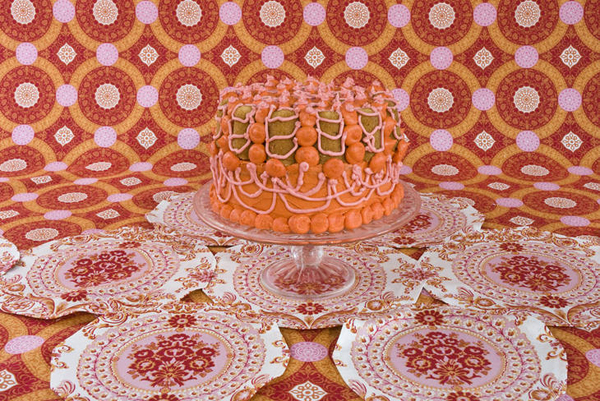
 Cosmicomics by Italo Calvino (Translated by William Weaver)
Cosmicomics by Italo Calvino (Translated by William Weaver)
I first encountered Italo Calvino’s short story collection Cosmicomics in college, when I was studying for an Italian minor. In my Italian literature class, we read the first, and probably best-known story, “The Distance of the Moon,” in Italian. This made my first impression even more other-worldly than it normally is reading Calvino, trying to wade through the depths of his delightful imagination in his mother tongue, and my second language. After reading the first story, I immediately went out and bought the whole collection (in English), and ate it up. But while I’m nowhere near fluent in Italian, I still prefer that original version, whether it be some nuance that I picked up, the simple pleasure of the Italian language and Calvino’s style of writing as one, or my personal connection to it. Since then, Calvino has always had a special place in my heart, and this collection especially.
The characters in this collection reoccur throughout, with names that look like mathematical equations. The main narrator for the majority of the stories is old Qfwfq, who tells stories about the early days of the universe, where space, time, matter, and planets were very different than they are now. Each story begins with a scientific fact from the history of the universe, and then Calvino is off in his magical world of storytelling.
Each story is about some human yearning or curiosity. “The Distance of the Moon” is about a love triangle between Qfwfq, his deaf cousin, and Mrs. Vhd Vhd, in the days when the moon was close to the earth. Qfwfq is in love with Mrs. Vhd Vhd, Mrs. Vhd Vhd is in love with his cousin, and his cousin is in love with the moon. What the reader is left with at the end of the story is the sense of the ache of a solitary, unattainable love. In “A Sign in Space,” Qfwfq desperately searches for a sign he left for himself, back before signs were anything. You can even get a little postmodern with Calvino here, in the discussion of the sign and the signifier. In the story “Without Colors (another one of my favorites), Qfwfq is fascinated once colors come to be, while his love, Ayl, is frightened by them. Instead, she finds safety in the grayness that used to be the earth.
What baffles me most about Calvino’s writing is how creatively convoluted and wildly imaginative his characters and settings are, while he at the same time maintains a heartbreaking universality. He writes with poetic abandon, and sneaks up on you with his honest humor.
There are some great YouTube videos interpreting “The Distance of the Moon,” like this beautiful, narrated animation (though not in English or Italian…but it includes English subtitles) or this shorter, silent animation.
How does reading a text either in its original, non-English language or reading it translated into English, change it for you? What foreign authors do you most enjoy?

I came across Wayne Thiebaud’s Bakery Counter (below) again recently, and was reminded of an Italo Calvino short story that takes place in a bakery: “Theft in a Pastry Shop.”
In the story, three small-time thieves break into a shop at night to raid the till. Baby, the smallest and most agile of the three, is sent in first through the back window, unaware of the kind of shop he’s breaking into. In the pitch black, Baby slowly realizes he’s found himself in paradise.
At once he began licking the hand, and groping around with the other at the same time. It touched something solid but soft, with a thin covering of fine sugar—a doughnut! Still groping, he popped the whole of it in his mouth and gave a little cry of pleasure on discovering it had jam inside. This really was the most wonderful place; whatever way he stretched out his hand in the dark, it found new kinds of cakes.
Now, I’m not a cake or doughnut person. In fact, I’m not a huge dessert person in general. (Pies are an exception. And custards. Yeah, OK, maybe I do like dessert.) But unexpectedly finding oneself in the middle of a free-for-all, cream-filled heaven? Even I could appreciate that. I’ll let you finish the story yourself, but in the meantime, here’s a confection collection to help inspire your own pastry-centered story.
Now excuse me while I pour myself another cup of coffee to cut through this sugar.

Wayne Thiebaud, Bakery Counter, 1962. Oil on canvas. Private collection.

“Pie eating contest at Tidal Basin bathing beach.” July 31, 1921, Washington, D.C. National Photo Company Collection glass negative. via Shorpy.

Amy Stevens, Confections (adorned) #15. Photograph. www.amystevensart.com
P.S. Open Mic! This week! Submit your work-in-progress! Yes!





